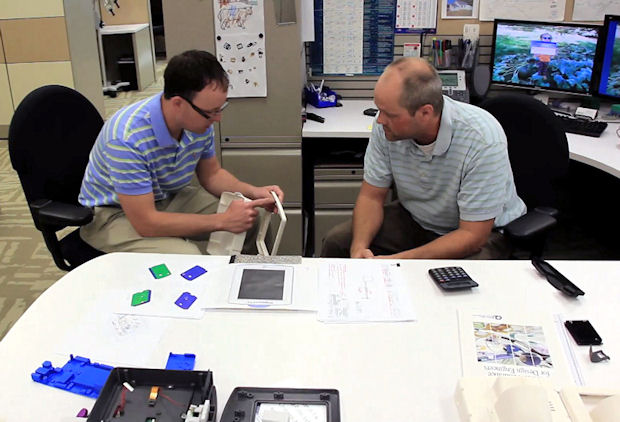A New Mindset in Product Design

Latest News
February 5, 2015
 Dear Desktop Engineering Reader:
Dear Desktop Engineering Reader:
Once when speaking about startup companies, Marc Andreessen, co-author of the first widely used Web browser, said something to the effect of that success hinges on your offering of a “radical product [that] has to be something where, when people look at it, at first they say, ‘I don’t get it. I don’t understand it. I think it’s too weird. I think it’s too unusual.’” In the late ’80s and early ’90s when additive manufacturing — 3D printing — was first commercialized, it was similarly jeered. Even many of those who saw utility in 3D printing waved it off as technology of interest to academia, the military and the like. No way would 3D printing gain a place on the same playing field with time-tested methodologies like clay modeling, injection molding, machining and others.
 Today, we know better. 3D printing has secured its position in the design and engineering toolset as well as on the fabrication floor. In doing so, it has also changed how designers and engineers understand product design and development. And with prices for professional-level, easy-to-operate 3D printing systems now at a point where any business can bring 3D printing in house, it’s a safe bet that we haven’t seen anything yet when it comes to changes stimulated by 3D printing technology.
Today, we know better. 3D printing has secured its position in the design and engineering toolset as well as on the fabrication floor. In doing so, it has also changed how designers and engineers understand product design and development. And with prices for professional-level, easy-to-operate 3D printing systems now at a point where any business can bring 3D printing in house, it’s a safe bet that we haven’t seen anything yet when it comes to changes stimulated by 3D printing technology.
So, how has 3D printing altered the way designers, engineers and their companies envision the product development process? “A New Mindset in Product Design: 3D Printing Can Help Bring Better Products to Market Faster,” a six-page white paper from Stratasys, aims to answer that question.
“A New Mindset” uses a combination of commentary and case studies augmented by select metrics to argue that small or mid-sized design, engineering and manufacturing businesses — really, any size firm — can gain a competitive edge with 3D printing in house. How? Well, 3D printing can make your design and prototyping processes faster, more effective and less costly than more traditional processes. That, of course, means better products to market quickly.
With 3D printing technology at hand, design teams and their collaborators throughout the development chain — say, marketing, clients, manufacturing and assembly — know and expect to have a CAD model in physical form within hours. That short time frame compared to past methods allows for more feedback from stakeholders, more evaluations of concepts and more optimizations of functional prototypes.
The metrics the paper provides on time saved through 3D printing illustrates this point. For example, self-reporting users in the aerospace industry say that they have achieved a 43% time reduction compared to their previous injection molding and machine tooling processes. Industrial designers molding clay reported a whopping 96% reduction.
How can that be? A couple of the paper’s case studies explain how. In one, a well-known company was able to 3D print experimental parts and part combinations in house, enabling them to quickly hone in on an optimal design. There were no delays waiting for outsourced prototypes and design changes could happen on the fly as an immediate consequence of experimentation. In another case study, a company 3D printed 30 functional prototypes of a radical new design and tested them under various operating conditions worldwide.
“A New Mindset in Product Design: 3D Printing Can Help Bring Better Products to Market Faster” also dips into such areas as 3D printing fundamentals and considerations for adopting 3D printing into your workflow. Its strength, however, is its eminent readability. Whether you’re into conceptual models, functional prototypes, tooling or finished goods in industries as diverse as aerospace, home goods, medical devices and transportation, this paper explains why in-house 3D printing is such a radical technology that can be critical to your company’s success. People with all levels of familiarity with 3D printing, especially your less technically inclined collaborators, can pick up insights into the changes that 3D printing brings to new product design and optimization processes. Hit today’s Check it Out link to download your complimentary copy.
Thanks, Pal. – Lockwood
Anthony J. Lockwood
Editor at Large, Desktop Engineering
Subscribe to our FREE magazine, FREE email newsletters or both!
Latest News
About the Author
Anthony J. Lockwood is Digital Engineering’s founding editor. He is now retired. Contact him via [email protected].
Follow DE






